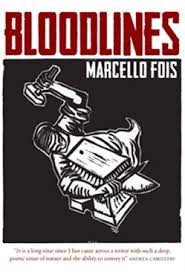The Last Lover by Can Xue (translated by Annelise Finegan Wasmoen) has the distinction of being the only novel to be on the long list of both the Independent Foreign Fiction Prize and the Best Translated Book Award. Surely, you might think, a guarantee of an exceptional book, and, indeed, you are unlikely to have encountered anything quite like it. Of the many western writers called into comparison, only J. G. Ballard seems remotely similar with his dream logic and emblematic characters – though if I tell having read all of Ballard’s work in no way prepared me for encountering The Last Lover, it may indicate the difficulty of locating a similar reading experience.
For six pages I felt I was following the narrative with relative ease: Joe, the manager of the Rose Clothing Company, walks to work, has a conversation with his boss, Vincent; negotiates with a customer, Reagan; and then encounters Vincent’s wife, Lisa, on the way home to his own wife, Maria. Lisa complains about Vincent’s drinking – an unusual but hardly startling occurrence – but before Joe can get any more information:
“Lisa disappeared just as abruptly as she’d appeared. Thinking over the day’s strange occurrences, Joe felt his head buzzing with confusion.”
Well, if Joe feels his head buzzing after six pages, he’s going to struggle with the remaining three hundred. Joe at least has the advantage of being a voracious reader – in fact his earlier conversation with Vincent is to tell him he is considering giving up his job so that he can read more –even though he has developed the ability to read while working:
“…he could even talk business with a customer (he is, after all the manager of the clothing company’s sales department) and at the same time remain immersed in his stories.”
As the novel progressed, I wondered whether Joe’s stories were simply becoming indistinguishable from his life:
“He read the story aloud at the top of his voice, with the profound feeling that his life of late had been reversed, and everyday life transformed into a dreamland, one that was like a chain of interlocking rings.”
The novel is certainly dreamlike, but not in the way we would normally use that word in reference to literature – a narrative which takes on a logic different to that of reality – but in the more literal sense of having a logic that makes no sense to the conscious mind. Can Xue has certainly spoken (in an interview with Asymtote) of her creativity in a way which highlights that she is not attempting to imitate the forms which precede her:
“Emotions are completely unleashed. I turn towards the dark abyss of consciousness and plunge in, and in the tension between those two forces, I build the fantastic, idealist plots of my stories. I think that people who are able to write in the way I write must possess an immense primitive energy and a strongly logical spirit. Only in this way can they maintain total creativity amid a divided consciousness.”
Here is a short example, typical of the novel (Daniel is Joe’s son):
“Joe saw the wasps sting Daniel’s face over and over. His face swelled rapidly so even his eyes were swollen into a single seam. Joe felt afraid, but the wasps didn’t sting him…Daniel sat calmly on the stone bench as if he had not felt the wasps attack him and was indifferent to the red swelling.
‘Daniel, where should I go?’
His manner was helpless. He knew Daniel couldn’t answer questions like this, Daniel, who was bending down to investigate the roses, half his face swollen. He told Joe that the roses gave him evil thoughts.”
In short doses there is something invigorating about the refusal of characters to react realistically and remain focussed instead on narrative logic invisible to the reader, but over the long term it becomes not only frustrating but dull. I’ve read a number of difficult novels and, at times, it can be like climbing a mountain, searching for the next foothold, unable to see the summit; but The Last Lover was a glass cliff: nothing to grab hold of, a plain expanse reflecting back on itself.









